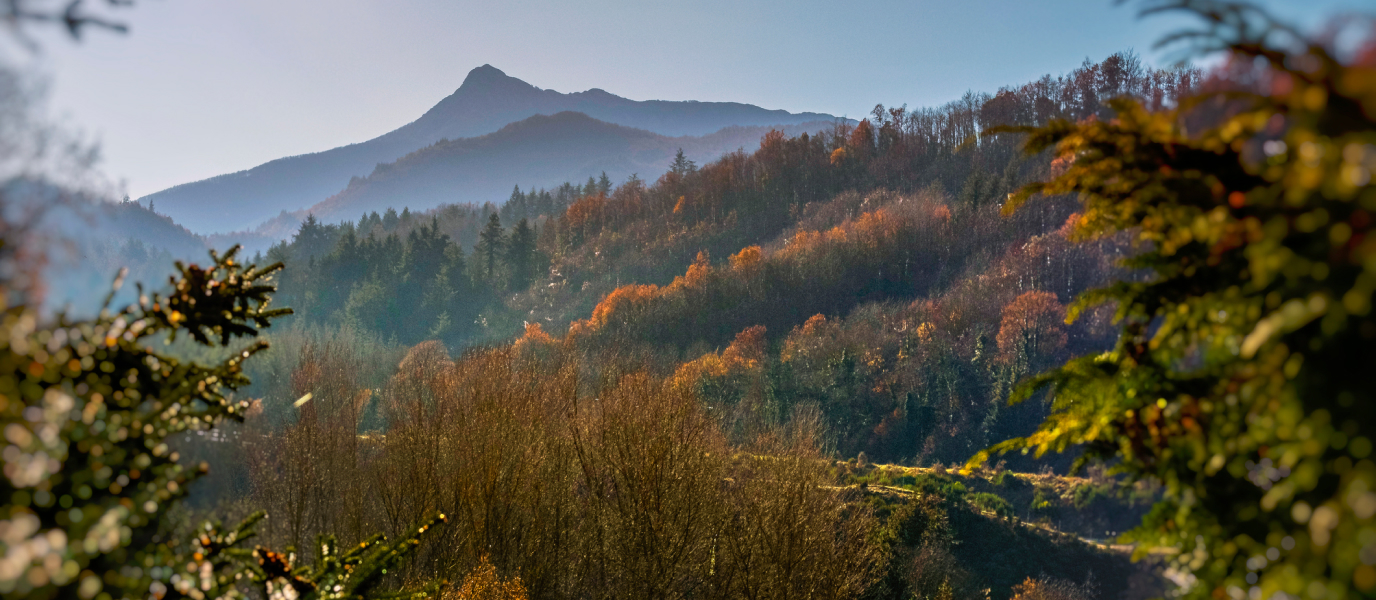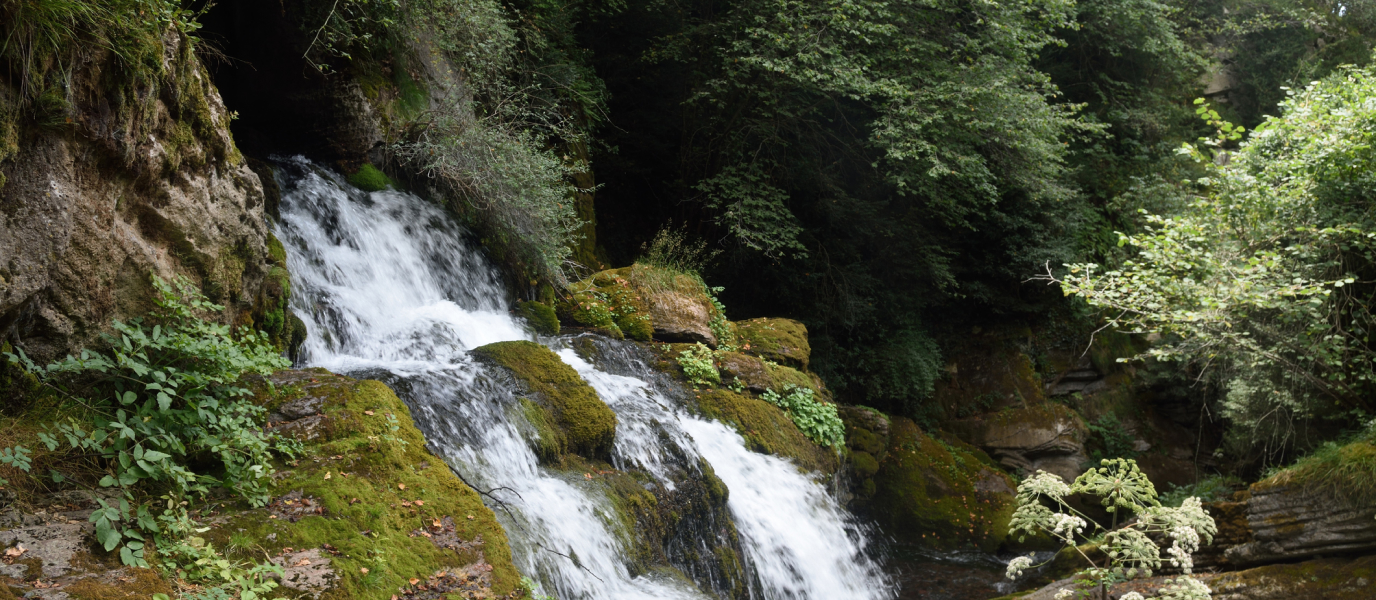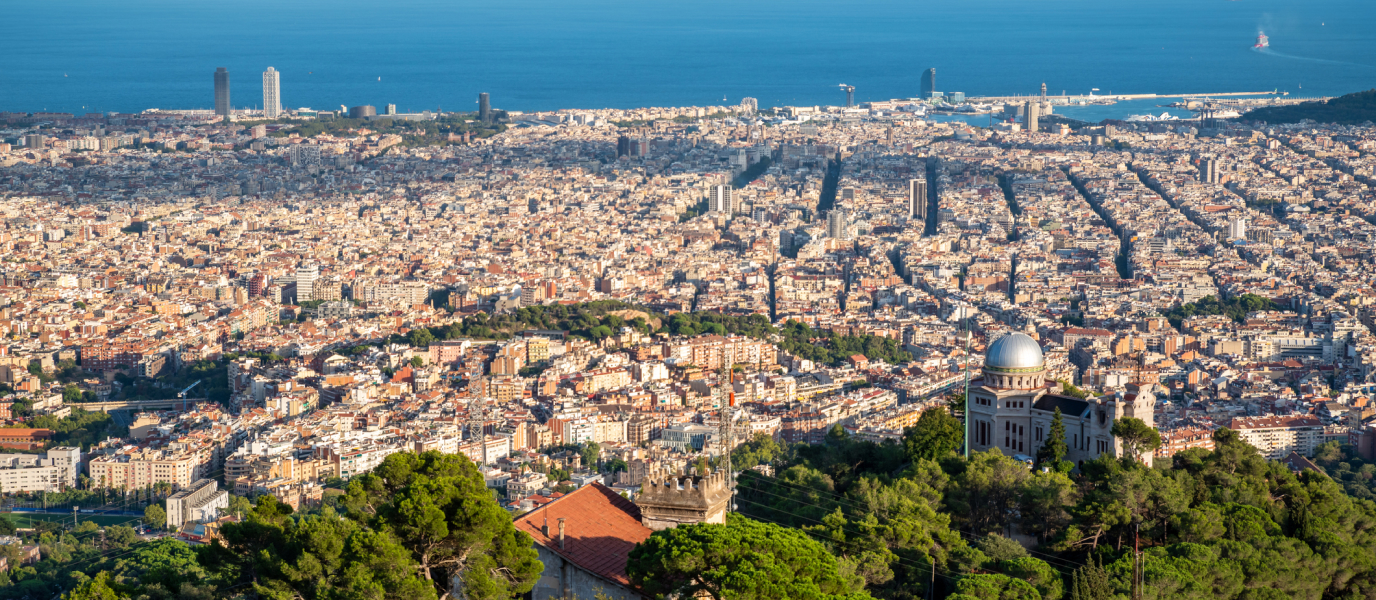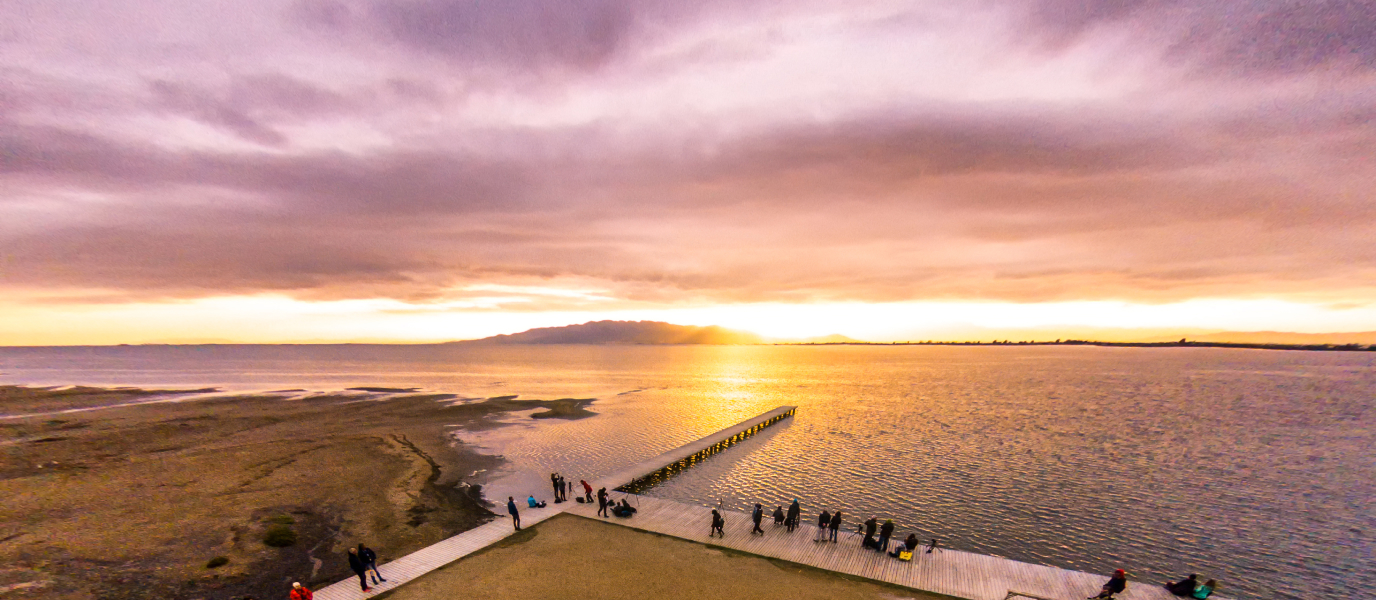The Natural Park of Montseny is just over an hour’s drive from Barcelona. It is therefore one of the favourite getaways for Barcelona residents (as well as visitors to the city), who come here to enjoy a stunningly beautiful natural setting, and one which is extremely precious from an ecological point of view. In fact, three ecosystems exist in this park, reflecting its terrain and, in particular, the influence of its climate.
This natural space is so valuable that UNESCO decided to award it Biosphere Reserve status in 1978.
The ideal way to enjoy the massif and the Natural Park is to follow one of the many signposted paths that cross its most outstanding features. These range from the summits of the Turó de l’Home, Matagalls and Les Agudes down to the rivers and streams that traverse this natural landscape, flowing through forests such as the one at Santa Fe del Montseny.
What is the Montseny Natural Park like?
The Montseny Natural Park covers approximately the area of the massif itself. Over 31,000 hectares that include three mountain ranges linked by the col of Sant Marçal and Coll Formic:
- The Turó de l’Home and Les Agudes which reach a height of 1,706 metres and 1,703 metres respectively.
- Matagalls, at 1,697 metres, is one of the most iconic images of the Park.
- Pla de la Calma (Puig Drau) ascends to a height of 1,344 metres.
These mountains flank the course of River Tordero, whose waters flow into the Mediterranean Sea near Blanes and Malgrat de Mar. The basin of the Tordero, together with that of the Riera d’Arbúcies and that of El Congost are three of the most important of the many river basins that irrigate the valleys of the Park.
These rivers do not just supply the forests and the many animal species that inhabit this protected area. They also sustain the various human settlements found in the region. For centuries, human activity here has coexisted with nature in a fairly harmonious manner. In fact, this area is considered to be an exemplary development model, which has been in compliance with the European Sustainable Tourism Charter since 2011.
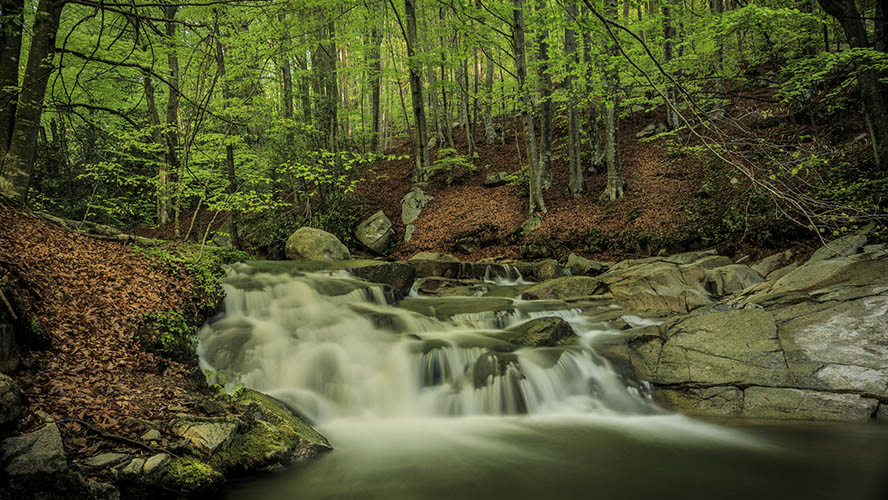
In and around the Natural Park, there is a total of 29 villages, including the one that gives the Park its name: the village of Montseny. There are also important vestiges of the past, ranging from archaeological remains to isolated hermitages lying beyond the villages.
Still on the subject of nature, in Montseny there exist all three biomes (or bioclimatic landscapes) characteristic of the continent of Europe: the Mediterranean, Euro-Siberian and Boreo-Alpine. All this within a relatively small area, thus adding even more value to this remarkable protected zone.
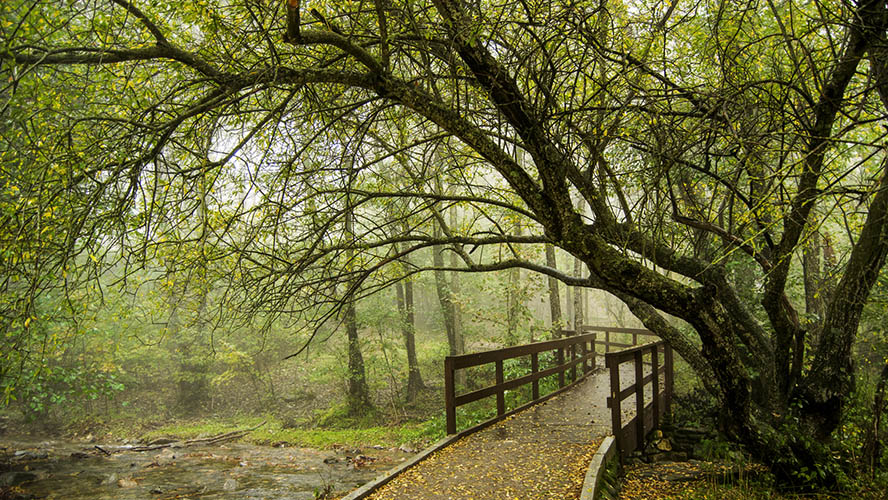
Hiking routes through Montseny
Over 30 signposted hiking routes cross the Montseny Natural Park. At the area’s information centres, Can Casades (in the Valle de Santa Fe) and Fogars de Montclús, visitors are directed to the routes that best fit their preferences.
The following are some of the most popular and scenic routes:
- Peaks of the Park: starting at the Santa Fe wetlands and leading to the peaks of Turó de l’Home and Les Agudes. This 14-kilometre, moderately difficult trail enables walkers to enjoy from the peaks a splendid panorama stretching from the Pyrenees to the Costa Brava.
- Sant Bernat to the Roca Escanyada: an easy route, which takes no more than a couple of hours and is suitable for all walkers. The route brings you to the castañar del Drac [Dragon’s chestnut tree], so called because the tree is shaped like the legendary beast.
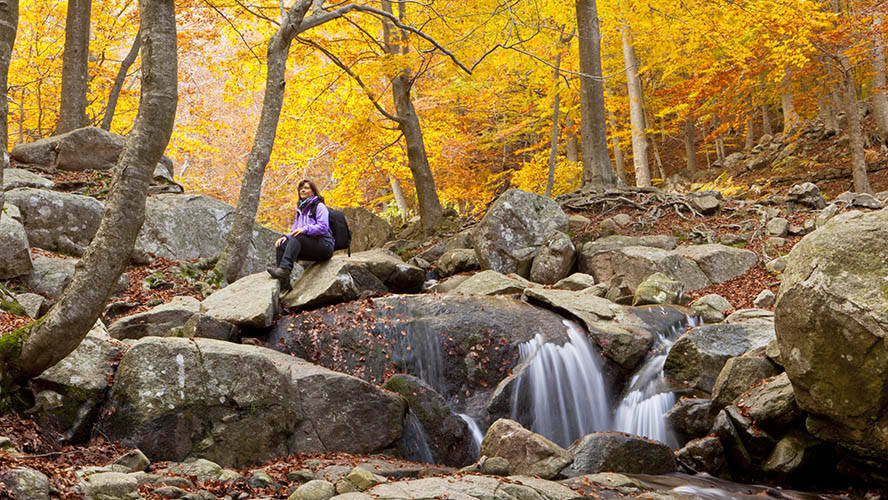
- The five peaks: a strenuous hike which takes in the main peaks and cols of the Park. The route starts from the village of Montseny and climbs to the Turó de l’Home, Les Agudes, Matagalls, Sui and Turó de Samont. A full-day hike suitable only for the physically fit.
- The abandoned aeroplane of Montseny: a three-hour hike to a forest where in 2000 a light aircraft, with only the pilot on board, came down. The plane is still there, and has become one of the Park’s main claims to fame. This route begins in the Santa Fe car park and skirts the wetlands.
- The waterfalls and pools of the Riera de Gualba: the perfect hike for the hotter months of the year, with the possibility of a cool dip en route. The trail is punctuated with pools, waterfalls and rapids, as well as the Suro Gros It covers over 19 kilometres, and is moderately strenuous.
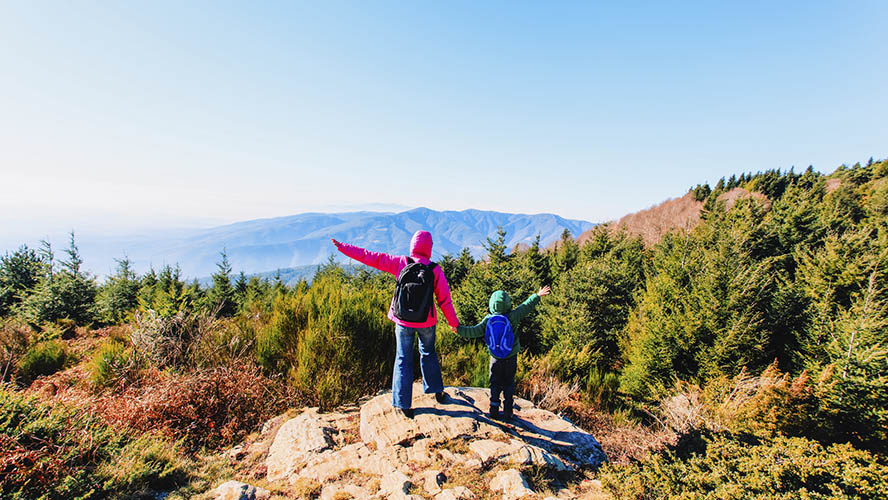
The ecological value of the Park
The Montseny Natural Park’s three ecosystems go a long way towards explaining its biological diversity. Over 600 species, mainly of plants, thrive there, from the water courses up to the peaks. The most commonly found and typical plants are: ilex, cork trees, pines, beech, elms, willows, alder, ash, strawberry trees, spruce, oak, chestnut, heathers and juniper.
In terms of fauna, the highlight is the endemic species, the Montseny newt. Its presence in the Park was discovered in 2005, and it is considered to be at serious risk of extinction. The area is inhabited by many other valuable species. These include: wild boar, foxes, civet, hares, dormice, goshawks, jays, robins, green lizards, adders, Aesculapian snakes, and red frogs.
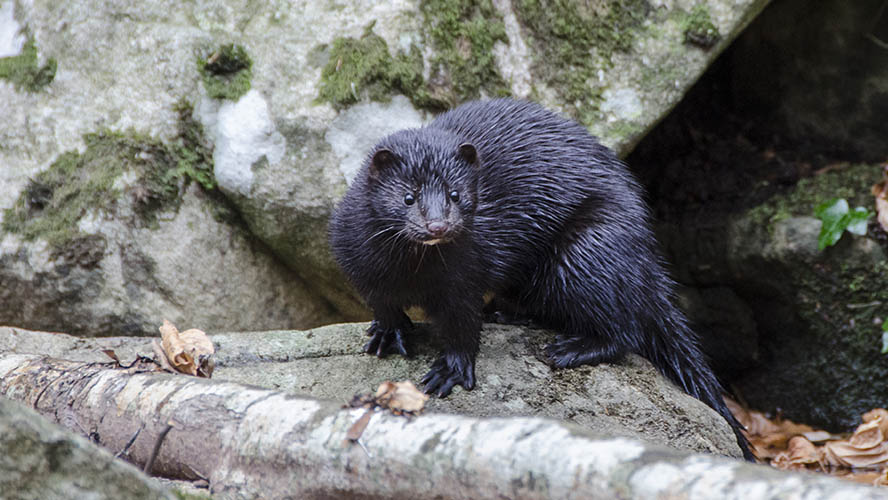
In the Park’s information centres and in the local tourist offices, visitors are told where they might spot many of these species. The centres also inform visitors about the rules that they should follow to respect and to conserve as far as possible the biological and geological wealth of this Biosphere Reserve.




































































